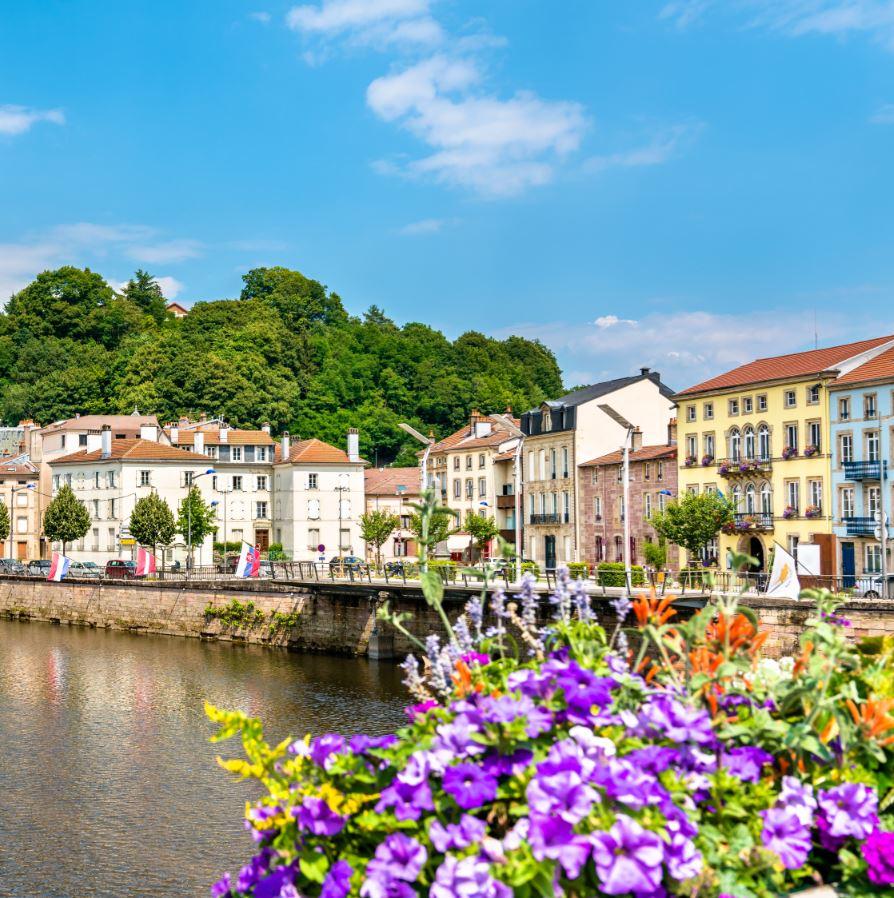Alsace and Vosges
Alsace is a versatile destination in the north-east of France that charms motorhome lovers with its culture and gastronomy. This rich, lively and generous region stretches along the Rhine River and takes you past wine hills and cosy villages with the peaks of the Vosges Mountains in the background. On this road trip, we first visit the many vineyards and the excellent Alsatian wines. Then, we follow the Route des Crêtes that takes us past mountain villages and picturesque towns to the highest peaks of the Vosges Mountains. The distances are not that great, which gives you more time to explore, admire and taste everything from this beautiful region.
Total distance of the route: 357 km
Lembach
Located in the heart of the Northern Vosges Regional Nature Park, the village of Lembach is ideal for starting this road trip. The Northern Vosges are less well known than the south of Alsace, but truly a paradise for those who travel by campervan, car or motorbike. The rural character gives you a lot of space and plenty of beautiful places that ask to be explored. This part of the Vosges is an area full of castles, with Fleckenstein Castle being the best preserved of the four ruins along the French-German border. Besides this castle, the impressive building Le Four à Chaux also deserves a visit. This defence line was built in the 1930s and is part of the Maginot Line. During a guided tour, you can walk through the underground corridors, the weapons depot and the doctor's block, among other things. Moreover, if you are in this region, you cannot miss the glass and crystal blowers. At the Centre International d'Art Verrier, you can watch glassblowers make real treasures the old-fashioned way in the workshop next to the museum. Besides the vast landscapes and culture, there are also a number of authentic villages near Lembach, such as Wissembourg and Hunspach, which bear witness to the region's medieval past and invite you to take a stroll.
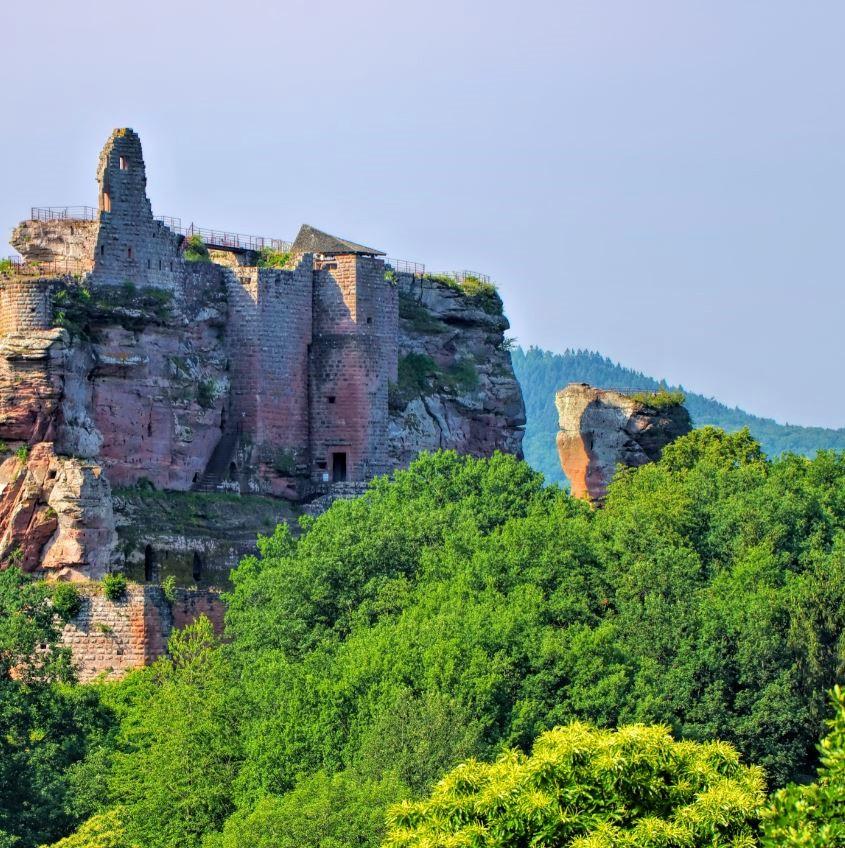
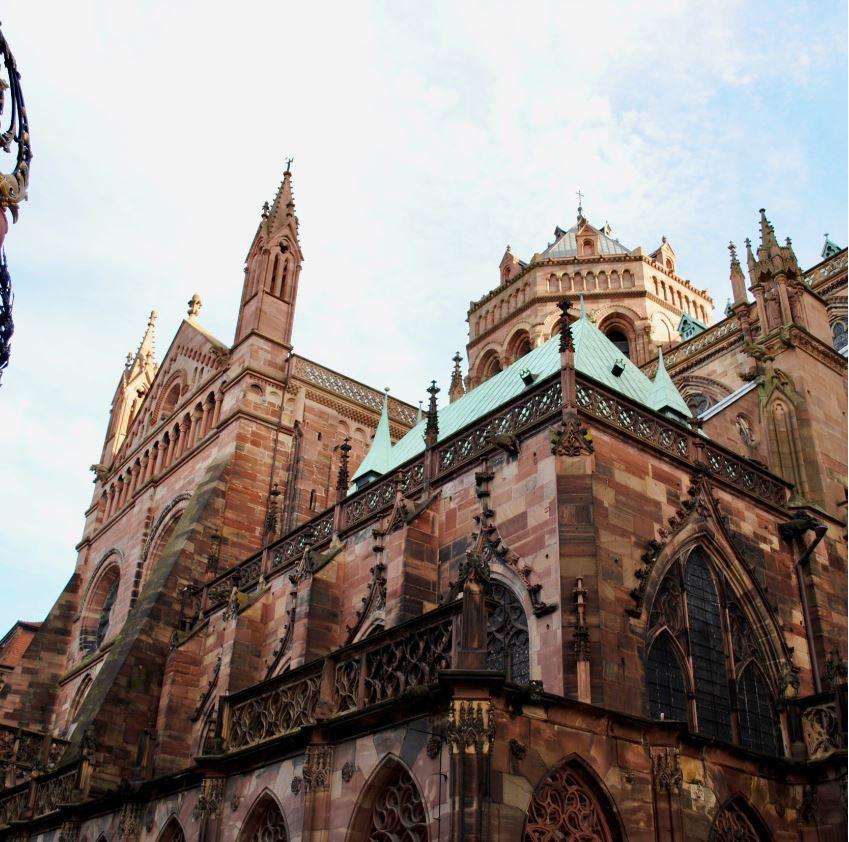
Strasbourg
After our stop in the Northern Vosges, we continue to Strasbourg, the capital of Alsace and also the European capital. Strasbourg is mainly known for the seat of the Council of Europe and the European Court of Human Rights, but there are many other sights to see. The historic city centre, Grande Île, has been included in the UNESCO World Heritage List. During a walk along the narrow streets between the old half-timbered houses and medieval buildings, you will notice a clear mix of German and French architectural styles. This is because Strasbourg has been in German and French hands several times. The biggest eye-catcher is the Cathédrale Notre-Dame de Strasbourg. With one of the highest church towers in the world, this cathedral is the symbol of the city. Apart from the impressive exterior, the interior with its stained-glass windows, the gigantic organ and the famous astronomical clock is also overwhelming.
From Strasbourg to Colmar, you will find most of the Alsace vineyards. The diversity of the soil and the selection of the right grape varieties have led to the creation of the Grands Crus. Along this wine route, you will find numerous opportunities to have a drink.
Obernai
On the wine route at the foot of the Vosges Mountains lies Obernai. This town owes its charm to the old city walls, the cosy market place and the traditional half-timbered houses. This makes Obernai the second most touristic city of Alsace, after Strasbourg. Between Obernai and our next stop, Ribeauvillé, there are three unmissable hotspots. The first is the pilgrimage site Mont-Sainte-Odile. A steep climb takes you up to 763 metres where you can find a parking space without too much trouble. On the hill, you can visit the Abbey of Hohenbourg, the Church of the Assumption of the Virgin Mary and, of course, the chapel dedicated to the holy healer Odile. You will also get an overwhelming view of the Alsatian plain. Afterwards, we continue to Mittelbergheim, one of the most beautiful French villages, which, with its off-white stone facades, is a typical wine village from the 17th and 18th centuries. Finally, we make a stop at Château Haut-Koenigsbourg where you have a sublime view of the plain. On a clear day, you can even see the Black Forest and the Alps.
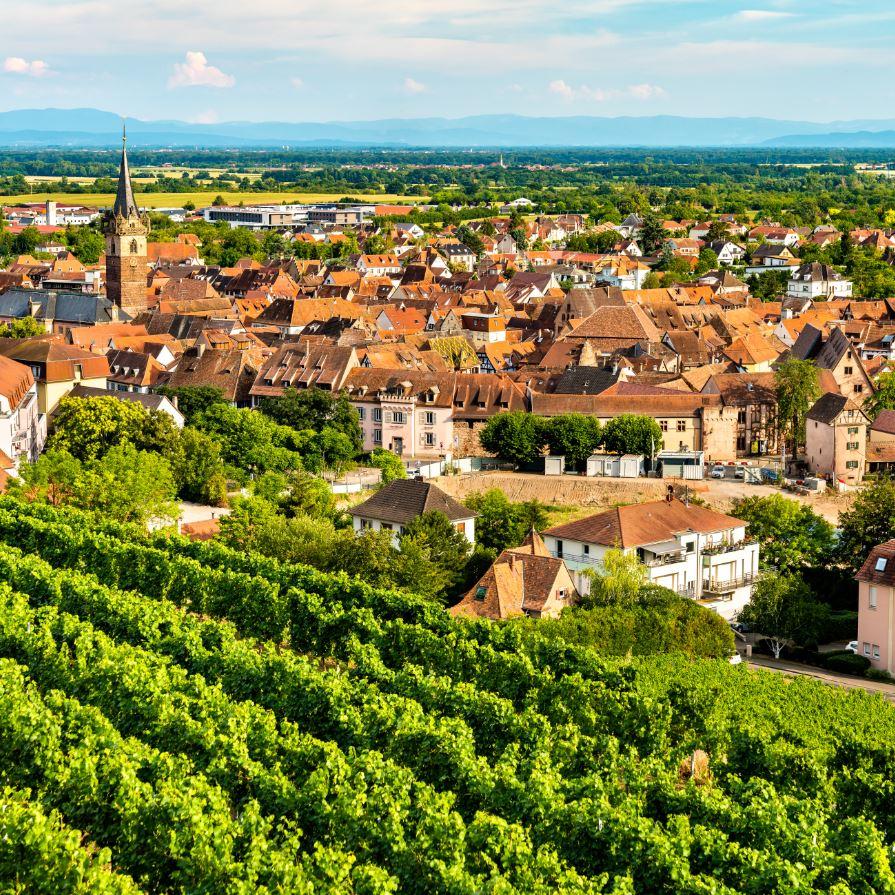
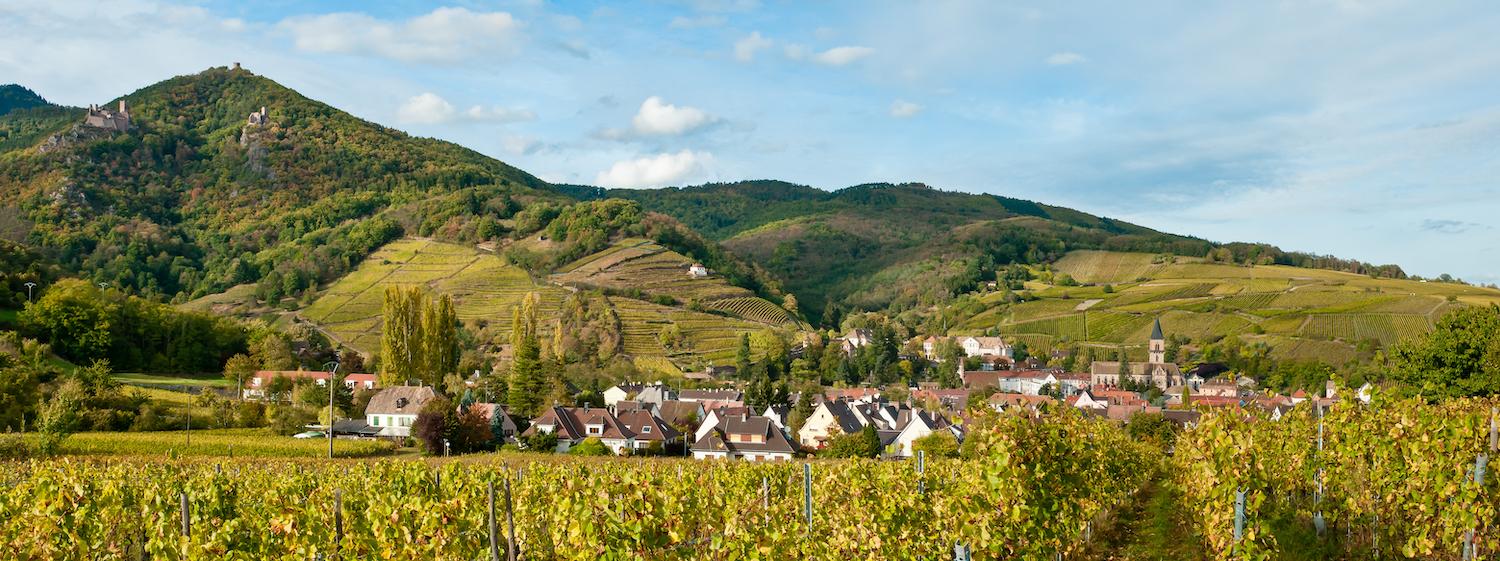
Ribeauvillé
Ribeauvillé is also called the pearl of the vineyards. In Alsace, it is one of the villages that has managed to retain its authentic character. In the centre of the village, this is evident when you walk along the Grand'Rue or the main street. Here, you will see a succession of historical buildings such as the Tour des Bouchers and the Chiesa del convento. Nearby are also the ruins of three castles, namely Saint-Ulrich, Girsberg and Haut-Ribeaupierre, which belonged to the lords of Ribeaupierre. However, the many tourists do not only come to Ribeauvillé for the sights. It is mainly the wine that gives the village its attraction. The many wine estates and vineyards in the region give you the chance to taste Riesling, Pinot Gris or Gewürztraminer. A wine tasting is a must. Are you making this road trip in the high season? Then it is best to check in advance where the parking areas are, because it can be quite busy. After Ribeauvillé, the route to Colmar passes the picturesque villages of Hunawihr and Riquewihr.
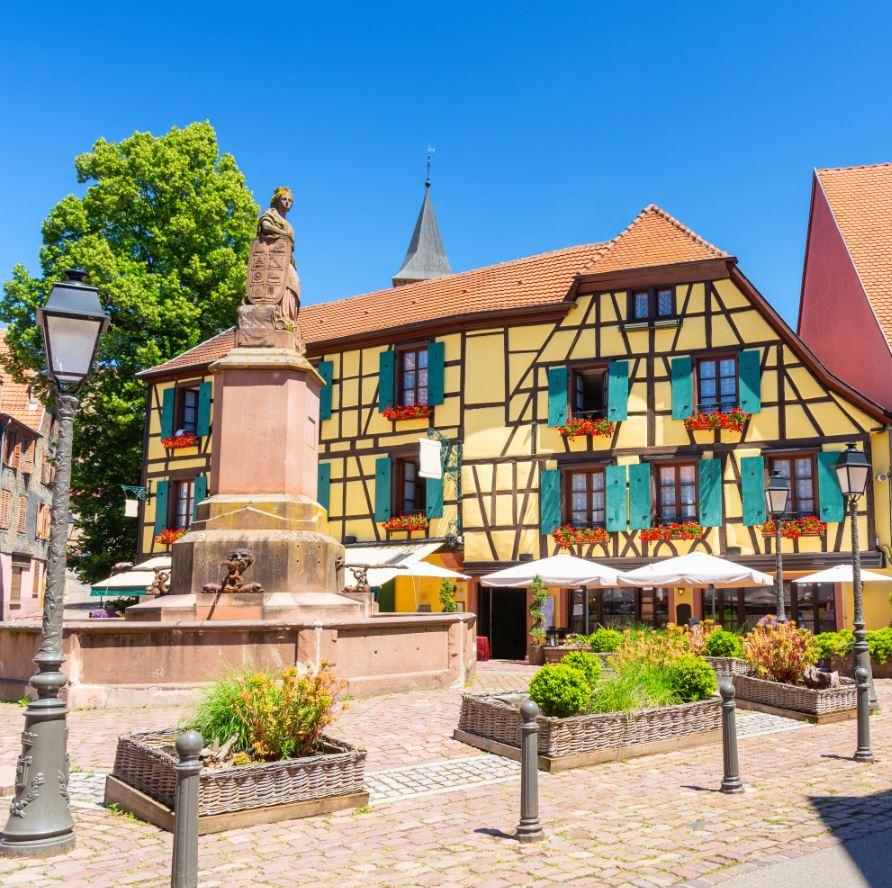
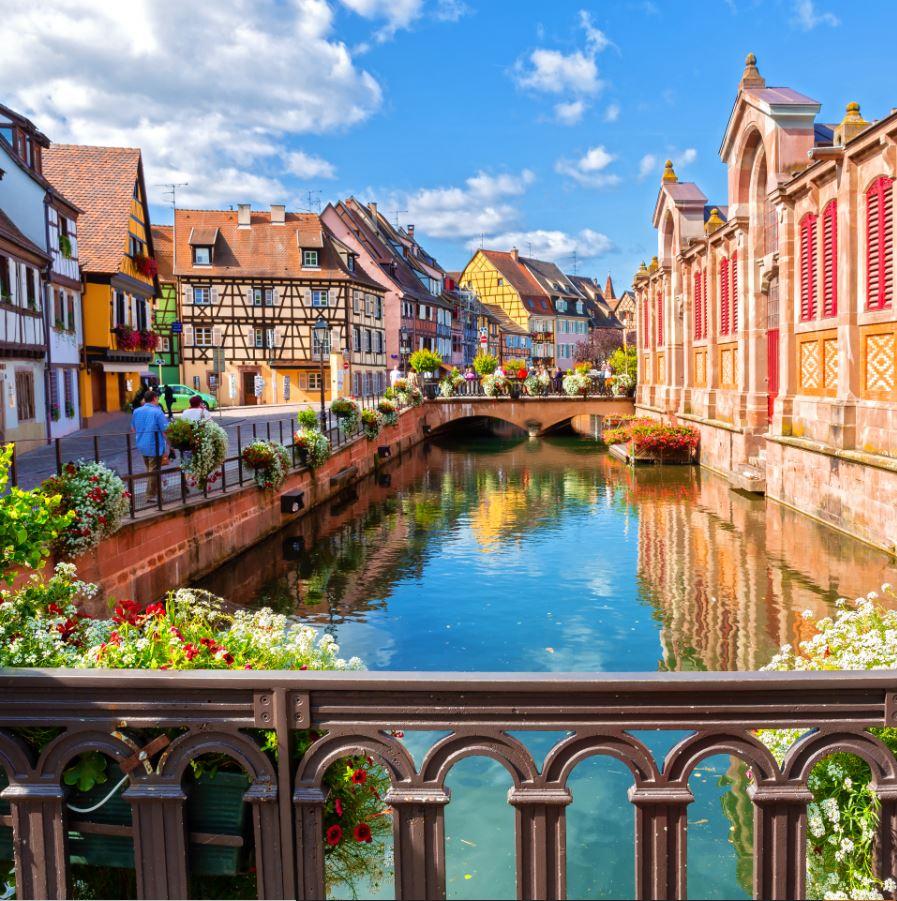
Colmar
Picturesque half-timbered houses, romantic canals, flower-decorated balconies and a maze of cobbled alleyways. Colmar is one of the most elegant cities of Alsace and is sometimes called the Venice of Alsace because of its many canals. Throughout the centuries, Colmar was able to escape major wars, which is why the centre is exceptionally well preserved. Stroll between the wooden medieval half-timbered houses and the beautiful Renaissance palaces. The Gothic church of Saint-Martin towers above the town and is a must-see. Inside, you can admire the unique Rococo organ and the late Gothic statue of the Last Supper. Another attraction in the centre is the Maison Pfister. This majestic house was built in an early German Renaissance style and has a spectacular spiral staircase and many beautiful 16th century frescos. Finally, stop by the Koïfhus and the Place de l'Ancienne Douane during your walk through the town.
La Petite Venise is located in the southern part of Colmar. In this tourist district, half-timbered houses from the 15th and 16th centuries flaunt themselves at the edge of a canal. Between the colourful houses, you can take a rest at one of the many cosy terraces.
Eguisheim
Just south of Colmar, completely surrounded by vineyards, lies the village of Eguisheim. This is where the Eichberg and Pfersigberg are grown, which according to connoisseurs are the two best wines of Alsace. As you approach the village, you will soon notice that it is built completely in circles around the castle of Saint-Léon-Pfalz from the 13th century. A unique way to experience the village is to walk along the Rue des Remparts which goes all the way round. Get out your camera, because it is a really photogenic street. The half-timbered houses are close together and the inhabitants have decorated their houses with flowers. The village was voted their favourite by the French in 2013 for a reason. Then head towards the centre where you will find a small chapel on the spot where the castle once stood. The altar, ceiling and walls are covered in colourful paintings. From the town, you can also see the three castles of Eguisheim. Nowadays, Eguisheim is mainly known as a wine town with numerous wine cellars. You have not yet done a wine tasting? Then this is the perfect opportunity.
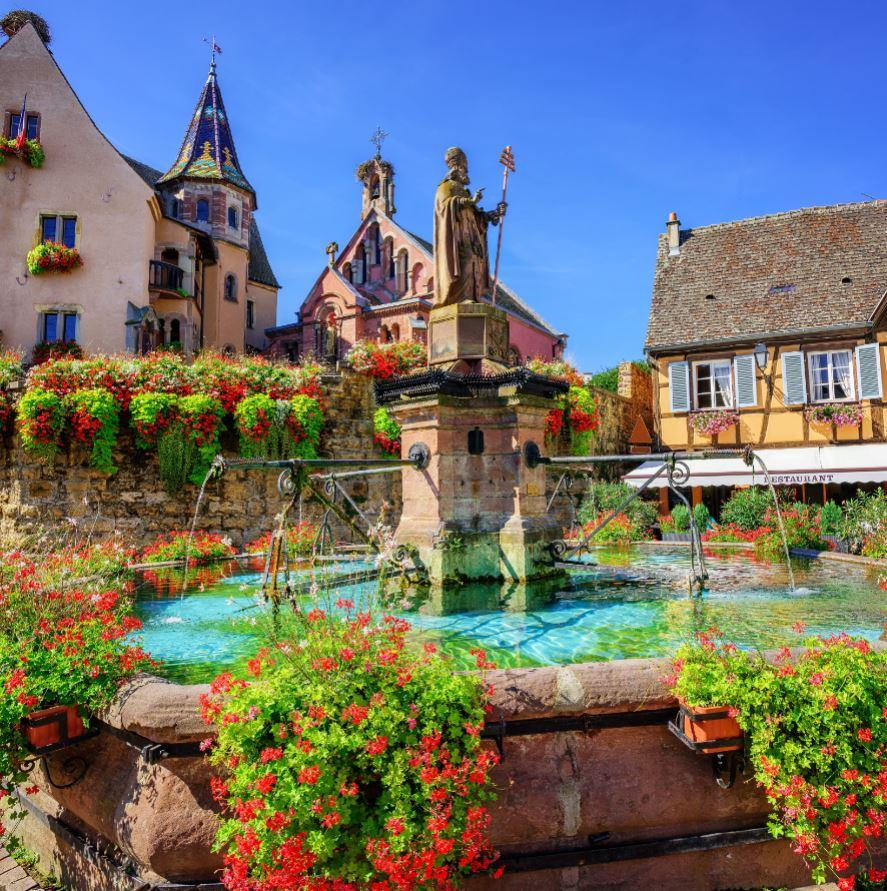
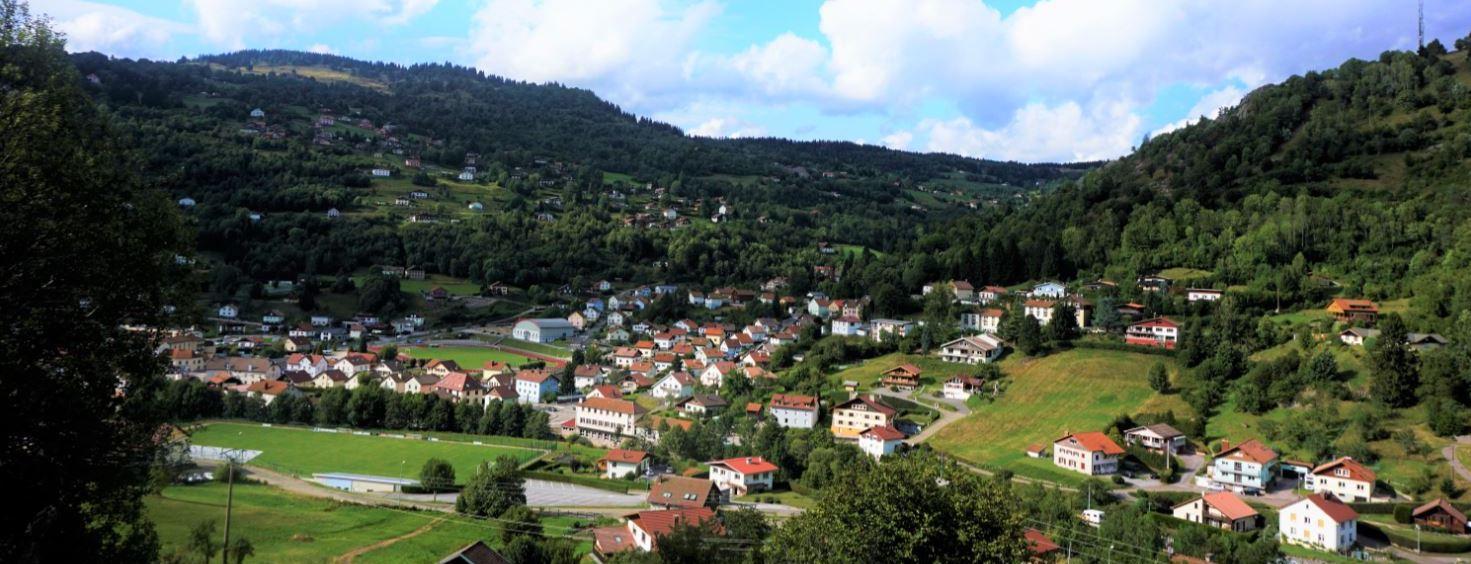
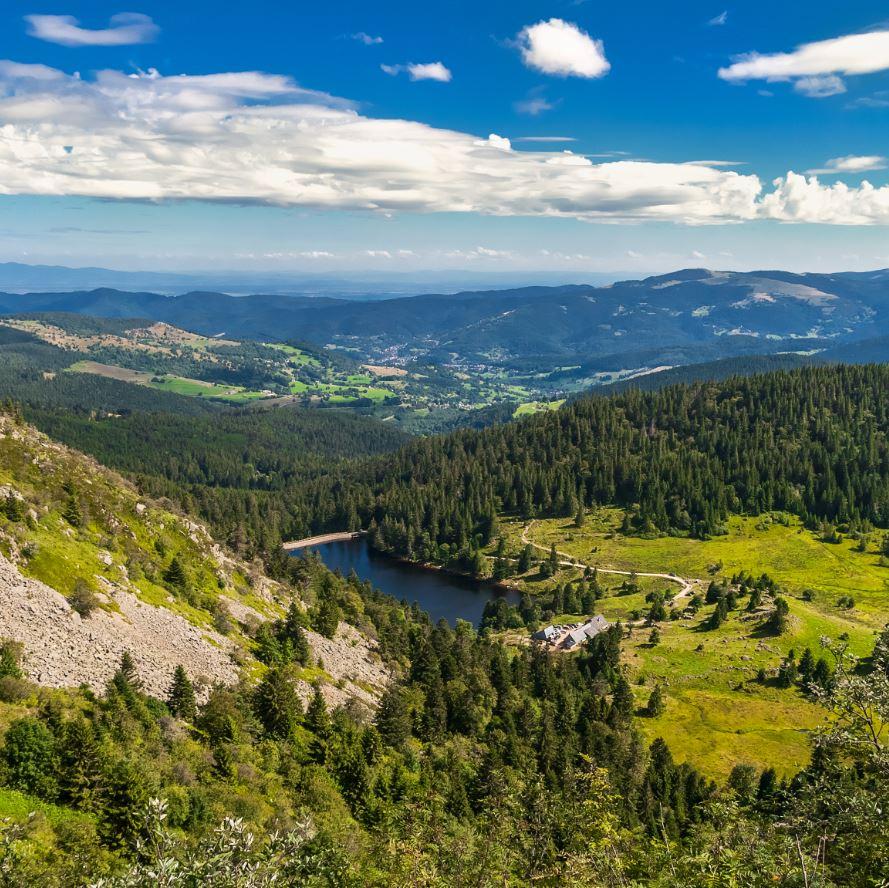
Route des Crêtes
From Eguisheim, we drive in the direction of Le Bonhomme, where we take the Route des Crêtes at the Col du Bonhomme. The Route des Crêtes leads you along the most beautiful and highest peaks of the Vosges. After more than 10 km, we arrive at Gazon du Faing, one of the first beautiful viewpoints. From the cliffs, you look out over the Rhine plain and Alsace. We then continue to Hohneck, the third highest peak in the Vosges. On the way, we pass the Col de la Schlucht and the occasional mountain lake adorns the landscape. From Hohneck, our camper-van route continues in the direction of le Markstein with, once again, a magnificent view. This time on the Alsace and the Swiss Alps. On to le Grand Ballon! With 1424 metres, this is the highest peak in the Vosges. On a clear day, you have a fantastic view of Alsace, the Black Forest and sometimes even the Alps.
La Bresse
La Bresse is a small mountain village at the foot of the Hohneck. If you have not yet driven up this giant along the Route des Crêtes, then this village is the perfect starting point for a hiking or cycling tour to the top. La Bresse is mainly known as the largest and best-equipped ski resort in the Vosges, but in the other seasons it is also a nice stopover. The village is the ideal starting point for hiking, cycling or mountain biking. Water lovers can make a trip to Lac des Corbeaux, where you can swim in the middle of nature. Surrounded by a beautiful pine forest, it is also the ideal place to cool down on a hot summer day. For the good walkers, this trip cannot miss the tough climb to the viewpoint La Roche du Lac. If you like an adventure in the mountains, you can choose a climbing course, canyoning or a via ferrata in La Bresse under the guidance of Verticales Vosges. This experience gives you the chance to explore the Vosges Mountains in a different way.
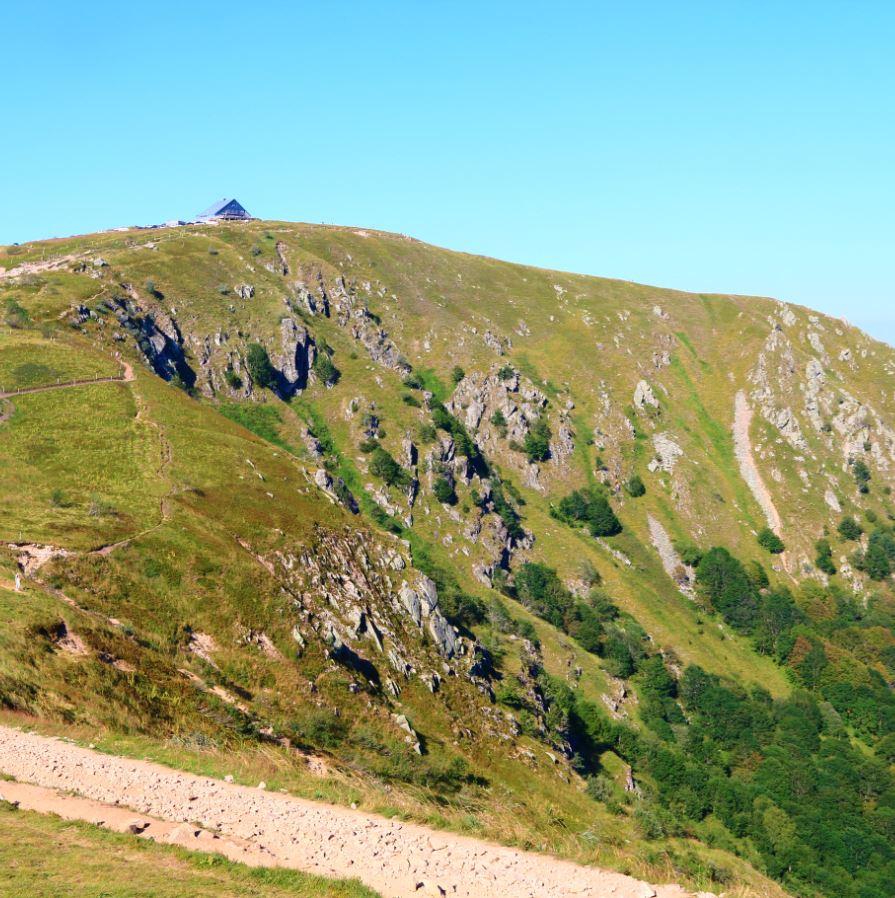
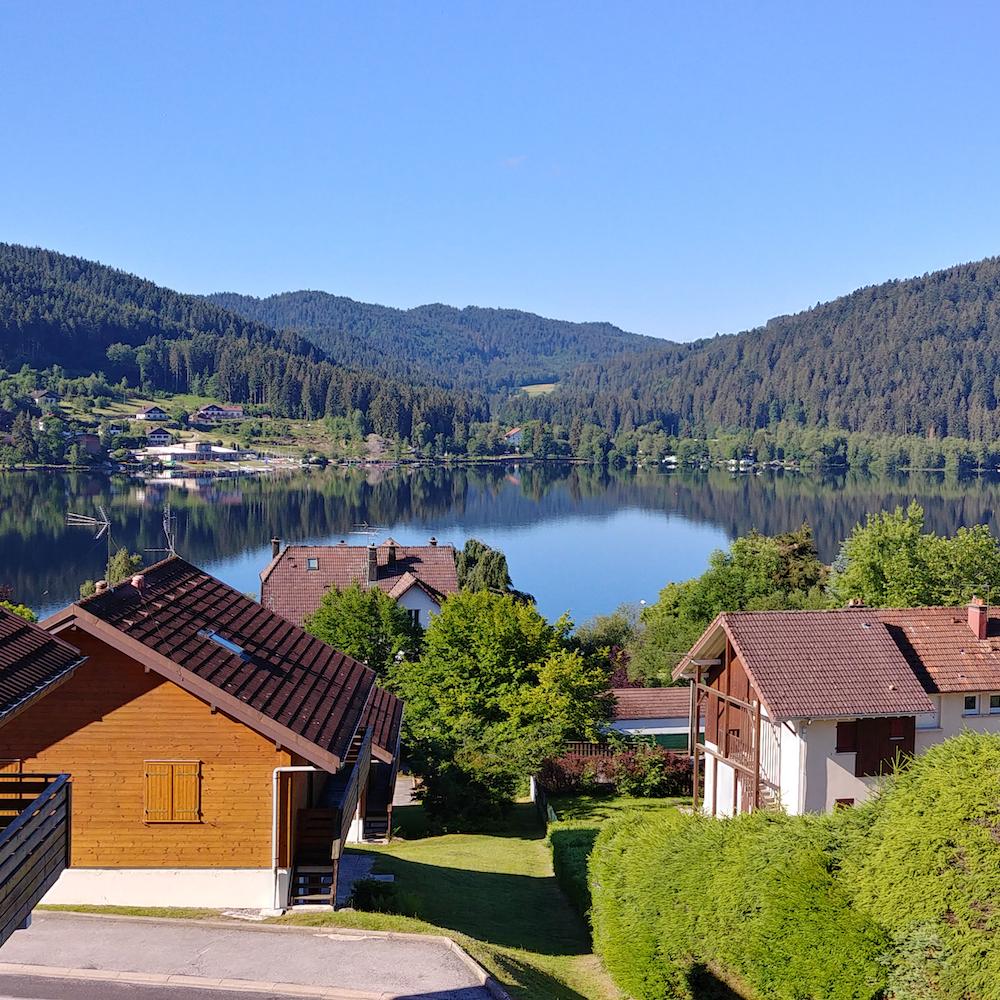
Gérardmer
The municipality of Gérardmer is a popular base for exploring the mountain peaks of the Great Vosges. Close to the centre is the largest natural lake in the Vosges, Lac de Gérardmer. This glacial lake lies at an altitude of 660 metres and is a pleasant place to be. In winter, the frozen lake is a magnificent spectacle that can be admired from the ski slopes of the resort. In the summer, there are numerous possibilities on and around the lake. You can canoe, sail, row, pedal boat, swim and fish. After a long day in the camper van, car or on the motorbike, you can also just pick a spot on the surrounding beaches and enjoy the sun. In the many restaurants and cafés, you can enjoy an evening meal with a view of the green hills and the lake. We recommend climbing the 85 steps of the Tour de Mérelle viewpoint. The wooden tower is no less than 17 m high and gives you a panoramic view of the lake, the village and the ski area. The walk to it takes you through the forest, along rocky paths and past small waterfalls.
Épinal
On this road trip through Alsace and the Vosges, the capital of the Vosges cannot be missed. Épinal is the most wooded town in France and is located on the right bank of a valley, at the foot of several medieval castle ruins. A visit to the ruins of the Château d'Épinal, dating from the 13th century, will give you a good view of the rest of the town. In the old town, a walk will take you almost automatically to the central square, Place des Vosges. This charming square is surrounded by Renaissance houses with typical arches and the Basilique Saint-Maurice as eye-catcher. While exploring the city, do not miss the Chapitre district, with its many coloured houses.
Épinal is known for its world-famous children's prints, les images d'Épinal. These coloured folk prints depict nationalistic scenes and were once used as wall decoration. Today, you can see the large collection in the Musée de l'Image. Besides culture and sights, the city also has many parks and gardens, such as the rose garden of the Roman House and the large botanical garden of trees, which is nice to stroll through. Thus, in the heart of the Vosges Mountains, this road trip through the vineyards of Alsace and the peaks of the Vosges Mountains comes to an end.
